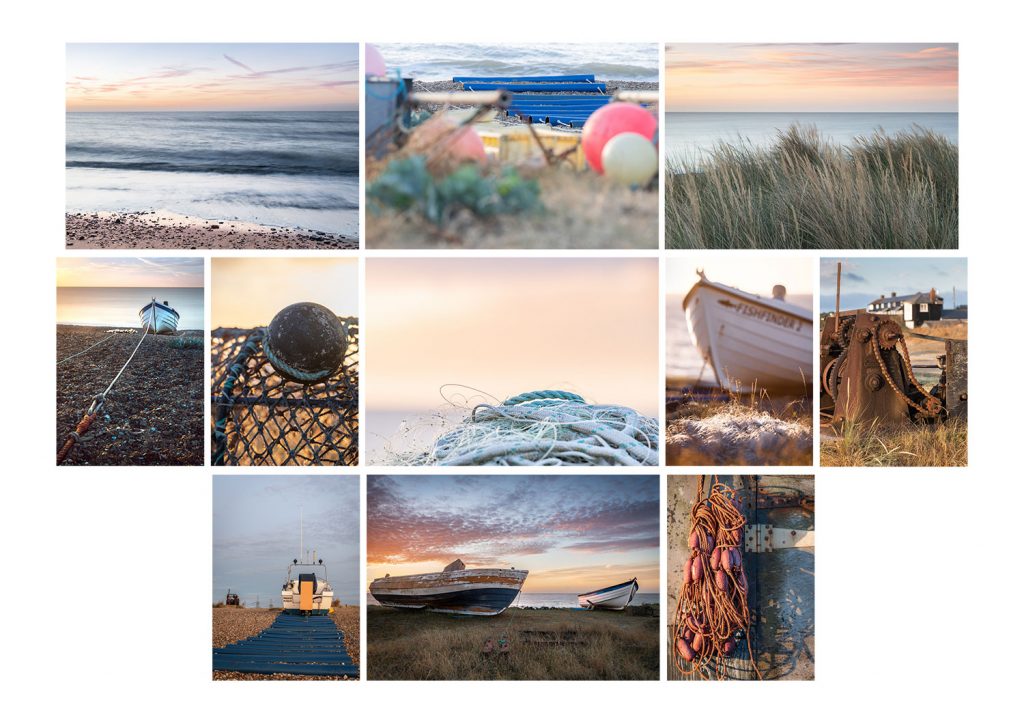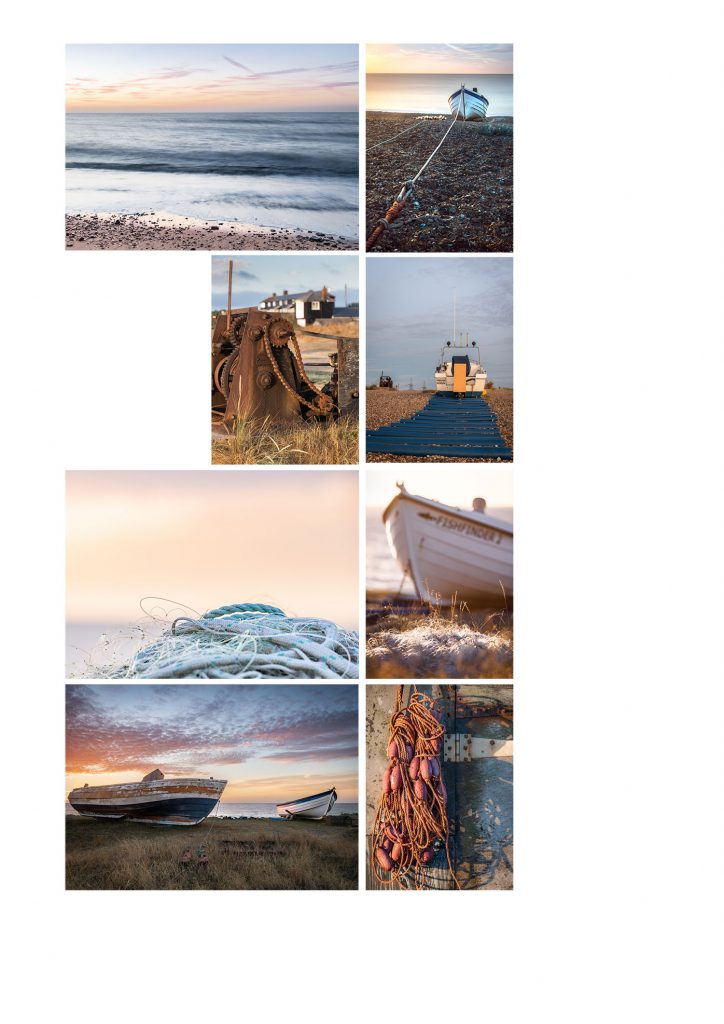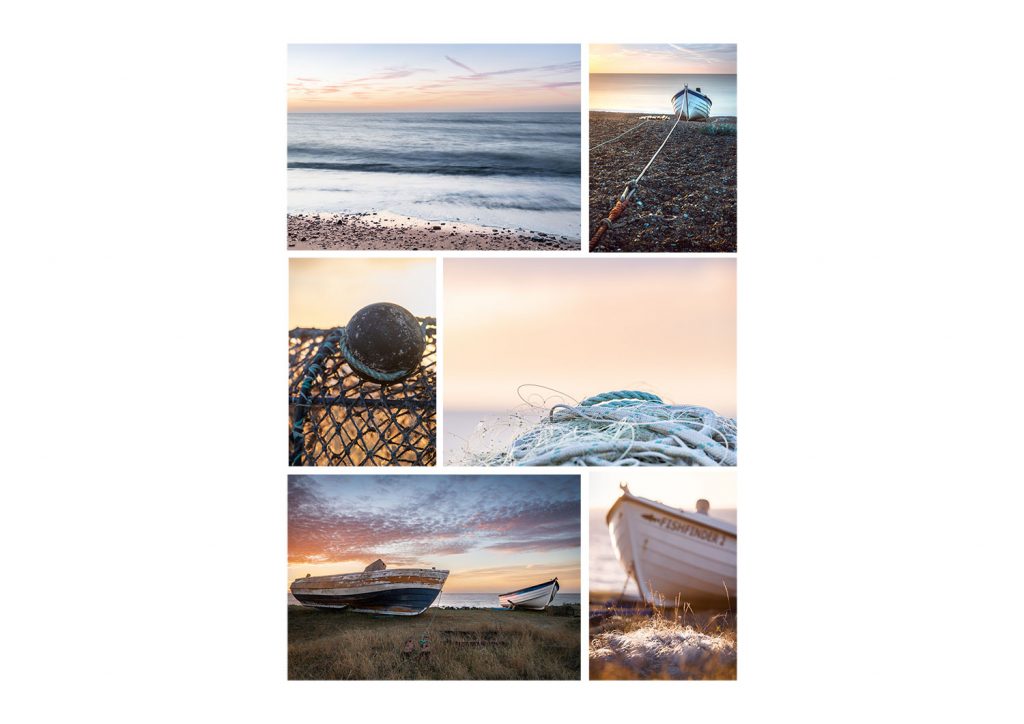Recently I ran my first photography project masterclass with two very different students. The workshop was split into two halves; photography in the morning and editing and sequencing in the afternoon.
The morning session took place on Sizewell Beach where the objective was to get to know the location and spend some time shooting images which conveyed a story. The subject and theme were left open and it was up to each student to come up with a compelling narrative about the location using about 9 images.
Sizewell is a beach of contrasts. It is home to Suffolk’s nuclear power plant consisting of Sizewell B with its blue walls and huge white dome and Sizewell A, the old Magnox reactor. Away from mans influence the beach has some lovely natural elements with lots of wildlife. It is also still used for fishing with the boats hauled out onto the shingle at the end of the day.
Sizewell is also a beach that is going to see huge change in the years to come with the construction of a third power plant on the site which has recently been given the go ahead by the government.
So you can see why I might have chosen this location for a project based workshop. It has a lot of variety in a relatively small area and plenty of detail that can help tell a story.
Both workshop students came up with similar themes for their mini projects based around the fishing fleet and the connection between the beach and the sea. However both elected to shoot their images in very different ways and both stories finished with very different narratives.
When shooting a small project like this it is a good idea to pick a theme but then let it evolve organically as you shoot. Make sure that you capture a variety of images – some wide scenes to establish context and some close up detail to focus the story and help with the narrative. It is also a good idea to shoot in sets so that you have several images that are likely to look good together. You will need this to create a visual flow within your project.
The photography part of the workshop was split into two halves creating some time in the middle to look back, evaluate our shots and work out what was missing.
With any project it is always a good idea to take stock of your images as you go along. This enables you to see how the story is flowing and allows you to get a feel for any additional images you may need. Always shoot more images that you think you require as they won’t all work well together. When it comes to sequencing you are looking for a narrative but also a visual flow based on colour, shape and compositional elements so keep this in mind when shooting.
When it comes to viewing, editing and sequencing your images you will need to think about the visual flow as well as the narrative. It is not just a case of arranging them in an order to tell a story, you will need to consider how each image relates to those around it. Look at the colours, shapes and the direction of compositional flow within each shot.
If you are only working with a few images I have found it is easy to use make a collection of your chosen images in Lightroom then go to view>survey which will put all the images on a neutral background. You can then move them around to see how they work in different arrangements.
If you are working on a book project you will have more images which makes it harder to view in Lightroom. For my book projects I always print out my images at 5×7 prints (or similar) and lay them all out on a table to begin sequencing. Again try to work in pairs and consider the visual flow as well as the narrative. Sometime it is not always possible to include all your favourite shots. The key is to think about the body of work as one entity instead of focusing on individual images.
I have put together three panels using the same base images to represent three different intentions. All the images were shot at dawn and together they depict the connection between the sea and the beach and how the fishermen use both in their daily lives.
The first panel shows all the images that I felt told the story and I have arranged them in a chronological order from the sea at the start to the fishing floats at the end hung up for another day.

The second panel is an example of how I might order the images if I were making a book. They are arranged in spreads with each image paired with another to tell the same story. I have tried to make the pairings tell the story of the sea, the beach and how the boats get from one to the other. I have tried to make my pairings fit together visually as well as narratively. To do this I have omitted a couple of images from the first panel that I felt didn’t fit so well.

The third panel is purely decorative. It still tells a similar story but I chose the images based on their colours, tones and how well they worked as an entity. For this panel I am looking at the overall effect and treating the result as one image.

You can see that the panels are different for different intentions, but they all tell roughly the same story and utilise similar colour pallets.
If you would like to try a small photography project please check out my Sunrise Photography Project masterclass which I am running on 1st October. There are only two places available so please book quickly.